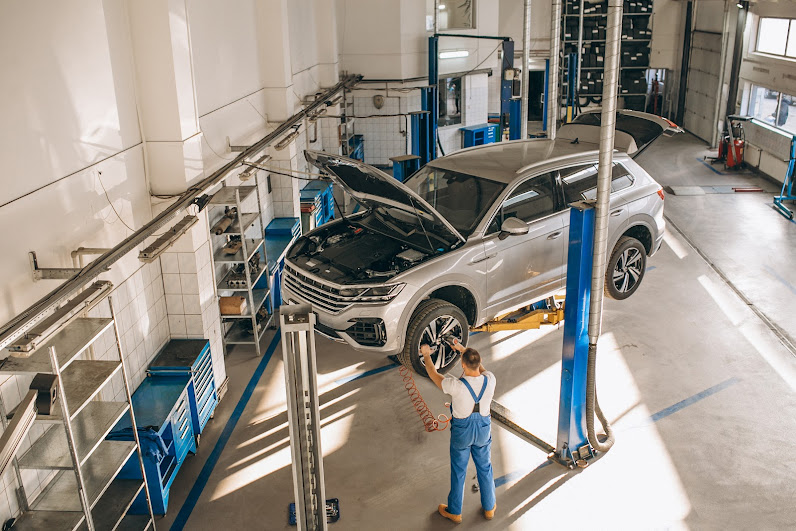Automotive Industry Challenges in 2024: Strategies for Success
In the ever-evolving landscape of the automotive industry, 2024 presents a myriad of challenges for businesses to overcome. From technological advancements to shifting consumer preferences, staying ahead of the curve requires adaptability and foresight. In this comprehensive guide, we'll delve into the key challenges facing the automotive sector in 2024 and explore actionable strategies to thrive in this dynamic environment.
Embracing Electric Vehicle Revolution
One of the most prominent shifts in the automotive industry is the rapid rise of electric vehicles (EVs). With growing concerns over environmental sustainability and regulatory pressures to reduce emissions, traditional automakers are compelled to pivot towards electrification. However, this transition comes with its own set of challenges, including the development of reliable battery technology, establishing a robust charging infrastructure, and overcoming consumer skepticism regarding EV performance and range.
To navigate these challenges, automakers must invest heavily in research and development to enhance battery efficiency and longevity. Collaborations with technology firms can accelerate innovation in this space, while strategic partnerships with governments and utilities can expedite the rollout of charging stations. Moreover, effective marketing campaigns highlighting the benefits of EVs, such as lower operating costs and reduced carbon footprint, can help alleviate consumer concerns and drive adoption.
Autonomous Driving: The Road Ahead
Another transformative trend shaping the automotive industry is the advent of autonomous driving technology. While fully autonomous vehicles are still in the testing phase, semi-autonomous features such as adaptive cruise control and lane-keeping assist are becoming increasingly common. However, ensuring the safety and reliability of these systems remains a significant challenge.
To address this, automakers must prioritize rigorous testing and validation of autonomous systems under various real-world scenarios. Collaborating with regulators to establish clear safety standards and regulations is essential to instill confidence among consumers and ensure widespread adoption of autonomous vehicles. Additionally, investing in cybersecurity measures to protect against potential cyber threats is paramount to safeguarding the integrity of autonomous systems.
Supply Chain Disruptions: Navigating Uncertainty in Automotive Industry
The automotive industry is no stranger to supply chain disruptions, but the events of recent years, including the COVID-19 pandemic and geopolitical tensions, have underscored the vulnerability of global supply chains. From semiconductor shortages to transportation bottlenecks, manufacturers are grappling with unprecedented challenges that threaten production schedules and profitability.
To mitigate supply chain risks, automotive companies must adopt a proactive approach to supply chain management. This includes diversifying sourcing strategies, building resilient supplier networks, and leveraging digital technologies such as predictive analytics and blockchain to enhance visibility and traceability. Furthermore, fostering closer collaboration with suppliers and implementing flexible production processes can enable manufacturers to adapt swiftly to changing market conditions.
Leveraging Digital Transformation for Competitive Advantage
In addition to addressing the challenges posed by electrification, autonomous driving, and supply chain disruptions, automotive industry must also prioritize digital transformation to gain a competitive edge. Embracing digital technologies such as artificial intelligence, big data analytics, and Internet of Things (IoT) can unlock new opportunities for efficiency and innovation across the value chain.
By leveraging data-driven insights to optimize production processes, enhance customer experiences, and drive product innovation, automotive companies can streamline operations and deliver compelling offerings that meet evolving consumer expectations. Furthermore, investing in digital infrastructure and talent can empower organizations to adapt swiftly to changing market dynamics, capitalize on emerging trends, and maintain a competitive edge in the digital age.
By embracing digital transformation as a strategic imperative, automotive companies can position themselves for long-term success in an increasingly digitalized and disruptive industry landscape.
Conclusion: Automotive Industry
As the automotive industry marches forward into 2024 and beyond, businesses face a multitude of challenges that demand innovation and strategic foresight. From embracing electrification and autonomous driving to navigating supply chain disruptions, the ability to adapt and innovate will be crucial for success. By embracing these challenges as opportunities for growth and transformation, automotive companies can position themselves as leaders in a rapidly evolving landscape.
With a clear understanding of the key trends and strategies outlined in this guide, businesses can forge ahead with confidence, seizing the opportunities that lie ahead in the ever-evolving automotive industry.


Comments
Post a Comment